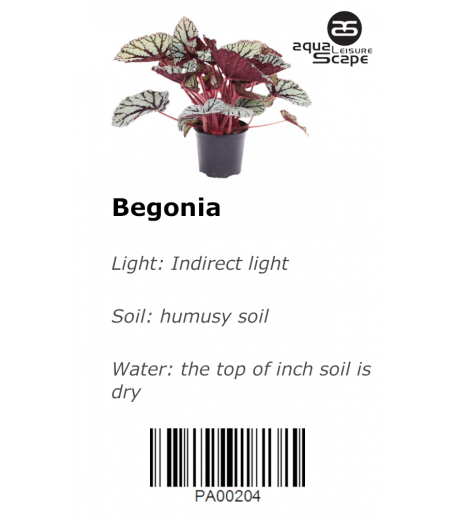Begonias are perfect for a long-blooming splash of color on shady porches. In cooler climates, you can grow these tropical beauties as houseplants or annual flowers in containers, hanging baskets, or beds. Begonias thrive in part shade and appreciate evenly moist, fertile soils. Their roots are toxic to some animals.
Learn about the many different types of begonias and how to grow them with our comprehensive care guide.
| Common Name | Begonia |
| Botanical Name | Begonia spp. |
| Family | Begoniaceae |
| Plant Type | Annual, Perennial, Herbaceous |
| Mature Size | 6-24 in. tall |
| Sun Exposure | Partial, Shade |
| Soil Type | Moist but Well-drained |
| Soil pH | Acidic, Neutral, Alkaline |
| Bloom Time | Varies, seasonal |
| Flower Color | Pink, red, white, yellow, orange |
| Hardiness Zones | 9-11 (USDA), some varieties 6-9 |
| Native Areas | South and Central America, Africa, South Asia |
| Toxicity | Toxic to pets |
Light
Begonias are forest understory plants in their native habitats, so they usually do best in partial sun positions outdoors. Some types, like wax begonias, will flower consistently in full sun. Indoors, begonias appreciate a position in bright but indirect light. Too much sun can wilt the delicate petals or cause the foliage colors to fade.
Soil
Begonias thrive in porous, slightly acidic, humusy soil. Excellent drainage is a must. Peat-based soils with plenty of organic matter, including leaf mold, are good. Potting mixes for African violets are a convenient option.
Water
Water your begonia thoroughly once the top inch of the soil is dry. While these plants appreciate even moisture to produce the best blooms, avoid overwatering begonias. Soggy soils can lead to root rot. Always water at the base of the plant, as these plants can also be susceptible to foliage fungal diseases, such as powdery mildew.
Temperature and Humidity
Begonias grown indoors do best with consistent temperatures ranging from 65 to 70 degrees Fahrenheit. Most varieties won't tolerate temperatures below 55 degrees Fahrenheit. Tuberous begonias planted in the garden should cope with cool late summer evenings but go dormant once the nights and days turn colder.
Being tropical plants, begonias like some humidity (typically, just under 50%). In houses with dry air, placing a saucer of water near your begonia or using a humidifier in the room can help the plant stay healthy. Keep garden begonias sheltered, as high winds can damage their fragile flowers and foliage.
Fertilizer
For rhizomatous begonias grown indoors, a basic water-soluble fertilizer mixed to quarter or half strength and applied to moistened soil in spring will help promote blooms. Tuberous begonias are somewhat more hearty feeders and like a 5-1-1 fertilizer (such as organic fish emulsion) applied twice a month during the blooming season. For hardy begonias, mix a bit of diluted fertilizer with some compost or peat moss and apply sparingly (too much fertilizer may harm the leaves).
Reviews
There are no reviews for this product.



